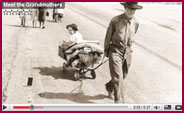
Erin Bried talked with grandmothers who survived The Great Depression, and their stories on making due, helping others, finding fun, and even falling in love are the basis for How to Sew a Button: And Other Nifty Things Your Grandmother Knew.

Grace Fortunato, 79
 Fortunato, the daughter of Italian immigrants, was born on July 29, 1930 in Brooklyn, New York, where she was also raised. After the Depression hit, her family moved into a two-bedroom apartment behind her father’s barbershop, where her two brothers shared one room and she, her sister, and her parents shared the other. Every day, her father prepared traditional Italian meals in their coal-fired oven. (Everything was made fresh, because they lacked a refrigerator.) Fortunato, who stands five feet tall, weighs about 100 pounds and answers to “Honey,” still makes some of her favorite family recipes in her Planstville, Connecticut kitchen for her husband of 57 years, her five sons and three grandchildren.
Fortunato, the daughter of Italian immigrants, was born on July 29, 1930 in Brooklyn, New York, where she was also raised. After the Depression hit, her family moved into a two-bedroom apartment behind her father’s barbershop, where her two brothers shared one room and she, her sister, and her parents shared the other. Every day, her father prepared traditional Italian meals in their coal-fired oven. (Everything was made fresh, because they lacked a refrigerator.) Fortunato, who stands five feet tall, weighs about 100 pounds and answers to “Honey,” still makes some of her favorite family recipes in her Planstville, Connecticut kitchen for her husband of 57 years, her five sons and three grandchildren.

Lucile Frisbee, 79
 Frisbee was born on January 11, 1930 in idyllic Delhi, NY, where she still lives. Her father was the town pharmacist, and her mother the town bookkeeper. Frugality, and general belt-tightening, helped the family ride out the Depression without suffering. She and her two sisters were accomplished musicians known about town as The Lee Trio. In fact, the girls would even take off from school to perform for local groups, including the Kiwanis Club and Eastern Star. When she wasn’t practicing the piano, Frisbee remembers playing cards and stickball and spending hours assembling beautiful May baskets (flower bouquets, left in secret for a neighbor or loved one, first of May). She married a friend from high school in 1955, and when she’s not helping him make and sell maple syrup, she shares her love of music with her three sons and five grandchildren.
Frisbee was born on January 11, 1930 in idyllic Delhi, NY, where she still lives. Her father was the town pharmacist, and her mother the town bookkeeper. Frugality, and general belt-tightening, helped the family ride out the Depression without suffering. She and her two sisters were accomplished musicians known about town as The Lee Trio. In fact, the girls would even take off from school to perform for local groups, including the Kiwanis Club and Eastern Star. When she wasn’t practicing the piano, Frisbee remembers playing cards and stickball and spending hours assembling beautiful May baskets (flower bouquets, left in secret for a neighbor or loved one, first of May). She married a friend from high school in 1955, and when she’s not helping him make and sell maple syrup, she shares her love of music with her three sons and five grandchildren.

Mildred Armstrong Kalish, 87
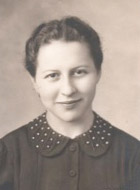 Kalish was born on Saint Patrick’s Day, 1922, and raised on her grandparents’ Iowa farm, which lacked both indoor plumbing and electricity. She spent many of her summer days befriending raccoons, taming colts, charming bees and, of course, doing chores, like picking beans, loading hay and gathering the cows for milking. After college and brief stint in the Coast Guard, Kalish married, raised two sons and became a professor of English at the University of Iowa, among other colleges. She now lives in Cupertino, California, where she writes about her childhood. Her memoir, Little Heathens (Bantam), was named one of the ten best books of the 2007 by the New York Times Book Review, which has surely made her two grandchildren and two great grandchildren proud.
Kalish was born on Saint Patrick’s Day, 1922, and raised on her grandparents’ Iowa farm, which lacked both indoor plumbing and electricity. She spent many of her summer days befriending raccoons, taming colts, charming bees and, of course, doing chores, like picking beans, loading hay and gathering the cows for milking. After college and brief stint in the Coast Guard, Kalish married, raised two sons and became a professor of English at the University of Iowa, among other colleges. She now lives in Cupertino, California, where she writes about her childhood. Her memoir, Little Heathens (Bantam), was named one of the ten best books of the 2007 by the New York Times Book Review, which has surely made her two grandchildren and two great grandchildren proud.

Jean Dinsmore, 91
 Because her local hospital shut down due to the 1918 flu epidemic, Dinsmore was born at home on December 30th on her Troy, Idaho farm. She learned to cook over her family’s wood-fired stove at age 10, in order to help feed her father, two brothers and the ten hired men who helped harvest the farm in the summer. By age 12, she and her older sister moved alone to town, fifteen miles away from the farm, to get a proper education. Her mother always told her, “I don’t care when you get married, but you have to finish college.” Dinsmore did, and became a teacher before marrying “one of the neighbor boys” in 1940. The newlyweds moved to Spokane, Washington, where she still lives and revels her two children and five grandchildren with stories of the farm.
Because her local hospital shut down due to the 1918 flu epidemic, Dinsmore was born at home on December 30th on her Troy, Idaho farm. She learned to cook over her family’s wood-fired stove at age 10, in order to help feed her father, two brothers and the ten hired men who helped harvest the farm in the summer. By age 12, she and her older sister moved alone to town, fifteen miles away from the farm, to get a proper education. Her mother always told her, “I don’t care when you get married, but you have to finish college.” Dinsmore did, and became a teacher before marrying “one of the neighbor boys” in 1940. The newlyweds moved to Spokane, Washington, where she still lives and revels her two children and five grandchildren with stories of the farm.

Elouise Bruce, 80
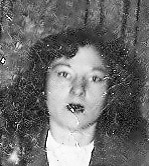 Born on February 9, 1929, Bruce endured some hard times in the hills of Mississippi. She, along with her mother, father and eight siblings, lived in a rented house on a Meridian farm, where cotton and corn was grown. While her father worked the land with a mule-drawn plow, Bruce and her siblings, from the ages of 8 onward, were expected to help support the family by picking cotton and delivering it to the gin, often even on school days. Despite their eleven-person-strong work force, Bruce’s family had no extra money. They grew what they ate, and ate everything fresh since they couldn’t afford a refrigerator or often even a block of ice. She shared a twin bed with her three sisters. And they went barefoot when their shoes wore out. “Lord, I wouldn’t want to go through it again,” she says, still pained by her memories. Through perseverance and a good sense of humor, Bruce prevailed, marrying her sweetheart in 1940 and raising 3 children. She now lives with her husband in Cleveland, Mississippi, where she boasts of 7 grandchildren (one of which, she says, is even a nurse anesthetist) and 5 great grandchildren.
Born on February 9, 1929, Bruce endured some hard times in the hills of Mississippi. She, along with her mother, father and eight siblings, lived in a rented house on a Meridian farm, where cotton and corn was grown. While her father worked the land with a mule-drawn plow, Bruce and her siblings, from the ages of 8 onward, were expected to help support the family by picking cotton and delivering it to the gin, often even on school days. Despite their eleven-person-strong work force, Bruce’s family had no extra money. They grew what they ate, and ate everything fresh since they couldn’t afford a refrigerator or often even a block of ice. She shared a twin bed with her three sisters. And they went barefoot when their shoes wore out. “Lord, I wouldn’t want to go through it again,” she says, still pained by her memories. Through perseverance and a good sense of humor, Bruce prevailed, marrying her sweetheart in 1940 and raising 3 children. She now lives with her husband in Cleveland, Mississippi, where she boasts of 7 grandchildren (one of which, she says, is even a nurse anesthetist) and 5 great grandchildren.

Nikki Chrisanthon, 84
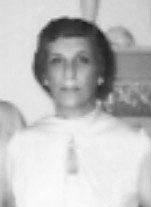 Chrisanthon, the daughter of Greek immigrants, was born on February 5th, 1925 and grew up in Allentown, Pennsylvania, where her father, an avid tap dancer, ran a candy and ice cream shop. When the Depression hit, his business suffered, so her mother went to work in a dress factory. To make ends meet, Chrisanthon, along with her older sister, had to pitch in around the house by helping to buy groceries, cook, and clean. Despite the hard times, she still has fond memories of her childhood: having picnics in the park, seeing movies for a dime and throwing grand parties with her relatives, which always included Greek dancing and singing. She lives with her husband of 61 years in Ocean City, New Jersey, where her 3 sons and 6 grandchildren visit her often.
Chrisanthon, the daughter of Greek immigrants, was born on February 5th, 1925 and grew up in Allentown, Pennsylvania, where her father, an avid tap dancer, ran a candy and ice cream shop. When the Depression hit, his business suffered, so her mother went to work in a dress factory. To make ends meet, Chrisanthon, along with her older sister, had to pitch in around the house by helping to buy groceries, cook, and clean. Despite the hard times, she still has fond memories of her childhood: having picnics in the park, seeing movies for a dime and throwing grand parties with her relatives, which always included Greek dancing and singing. She lives with her husband of 61 years in Ocean City, New Jersey, where her 3 sons and 6 grandchildren visit her often.

Alice Loft, 88
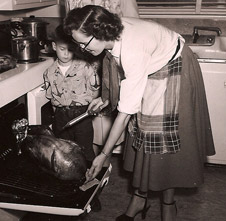 Loft was born on August 26, 1921 in Centralia, Washington. Her father then worked for a lumber company, while her mother raised her and her four siblings. Loft spent much of her youth living on her grandparents’ farm, where she learned to keep a garden, can produce, stoke the fire in a wood-burning stove and gather eggs from the chicken coop. Her sponge cake, a direct result of collecting more eggs than she knew what to do with, once earned her a blue ribbon at the local fair. After she married, she had three kids and opened a gift shop that sold artisan crafts made from rare wood. In 1970, after her husband passed away, she went to work in her family’s greenhouse. Now, she lives with her cat, Callie, in Tacoma, Washington, where she still bakes delicious cakes for her seven grandchildren and three great grandchildren.
Loft was born on August 26, 1921 in Centralia, Washington. Her father then worked for a lumber company, while her mother raised her and her four siblings. Loft spent much of her youth living on her grandparents’ farm, where she learned to keep a garden, can produce, stoke the fire in a wood-burning stove and gather eggs from the chicken coop. Her sponge cake, a direct result of collecting more eggs than she knew what to do with, once earned her a blue ribbon at the local fair. After she married, she had three kids and opened a gift shop that sold artisan crafts made from rare wood. In 1970, after her husband passed away, she went to work in her family’s greenhouse. Now, she lives with her cat, Callie, in Tacoma, Washington, where she still bakes delicious cakes for her seven grandchildren and three great grandchildren.

Beatrice Neidorf, 95
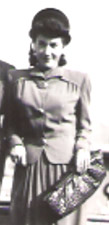 Born June 1st, 1915 in Philadelphia, Pennsylvania, Neidorf was the youngest of three children. By the time the stock market crashed in 1929, she was attending school and working on weekends at one the half dozen or so men’s furnishing stores that her father owned. Though money was scarce, she enjoyed having connections in the clothing business. Her father was often able to procure her some beautiful dresses, including one very memorable midnight blue evening gown with a fringed back, which she wore to a dance. Because she knew her father couldn’t afford to send her to college, Neidorf got a job at an auctioneer’s office, after graduating from high school. She worked there for nine years before meeting her husband, a pharmacist, and later moving to Washington, D.C. The two were happily married for 52 years. When she’s not volunteering at the Kennedy Center, where she’s donated her time for the past 29 years, Neidorf bakes apples pies for her three daughters, four grandsons, and two great grandchildren.
Born June 1st, 1915 in Philadelphia, Pennsylvania, Neidorf was the youngest of three children. By the time the stock market crashed in 1929, she was attending school and working on weekends at one the half dozen or so men’s furnishing stores that her father owned. Though money was scarce, she enjoyed having connections in the clothing business. Her father was often able to procure her some beautiful dresses, including one very memorable midnight blue evening gown with a fringed back, which she wore to a dance. Because she knew her father couldn’t afford to send her to college, Neidorf got a job at an auctioneer’s office, after graduating from high school. She worked there for nine years before meeting her husband, a pharmacist, and later moving to Washington, D.C. The two were happily married for 52 years. When she’s not volunteering at the Kennedy Center, where she’s donated her time for the past 29 years, Neidorf bakes apples pies for her three daughters, four grandsons, and two great grandchildren.

Sue Westheimer Ransohoff, 89
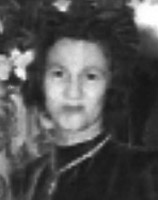 Born on December 22, 1919, Ransohoff was nine years old when the stock market crashed. On October 29th, 1929, she had plans to go trick-or-treating in her Baltimore neighborhood with her father, a stockbroker. “He didn’t come home that night,” she says. “I was too young to understand the implications. I just felt very let down.” Because her father pulled most of his money from the market before the crash, her family remained relatively unscathed by the Depression, even as her neighbors were forced to leave their sizeable homes for smaller apartments. “For most of my life, I was embarrassed to be quite comfortable,” she says. Still, having seen the fragility of wealth, Ransohoff, a graduate of Smith College, says she’s been marked by the Depression. After losing her first husband in World War II and later marrying a former beau, she moved to Cincinnati, where she always both earned her own money (first as a social worker, and later as a writer and an art museum publicist) and helped those in need (as a volunteer for Planned Parenthood and the Hearing Speech and Deaf Center of Greater Cincinnati). She’s known for throwing great parties, often attended by her 4 children, eight grandchildren and one great grandchild.
Born on December 22, 1919, Ransohoff was nine years old when the stock market crashed. On October 29th, 1929, she had plans to go trick-or-treating in her Baltimore neighborhood with her father, a stockbroker. “He didn’t come home that night,” she says. “I was too young to understand the implications. I just felt very let down.” Because her father pulled most of his money from the market before the crash, her family remained relatively unscathed by the Depression, even as her neighbors were forced to leave their sizeable homes for smaller apartments. “For most of my life, I was embarrassed to be quite comfortable,” she says. Still, having seen the fragility of wealth, Ransohoff, a graduate of Smith College, says she’s been marked by the Depression. After losing her first husband in World War II and later marrying a former beau, she moved to Cincinnati, where she always both earned her own money (first as a social worker, and later as a writer and an art museum publicist) and helped those in need (as a volunteer for Planned Parenthood and the Hearing Speech and Deaf Center of Greater Cincinnati). She’s known for throwing great parties, often attended by her 4 children, eight grandchildren and one great grandchild.

Ruth Rowen, 96
The daughter of Russian immigrants, Rowen was born in New York City on April 19, 1914. She spent much of her childhood living in then the only apartment building in the Bronx, which was then mostly pastoral farmland. When her mother fell ill, after giving birth to a younger brother, Rowen, then 12, took over running parts of the household. “That’s when I grew up,” she says, recalling her days of going to the market, returning to her mother’s bedside and asking her to “explain what had to be done with a chicken.” Happily, her mother recovered, but Rowen never forgot the lessons she learned as a child during the Depression: save money, make due and be generous. In 1934, she married, and much to her in-laws’ discontent, started a career working at the New York Public Library. Now, still living in New York City, she shares her love of books with her daughter and granddaughter.
| Copyright Erin Bried • Entries (RSS) |









